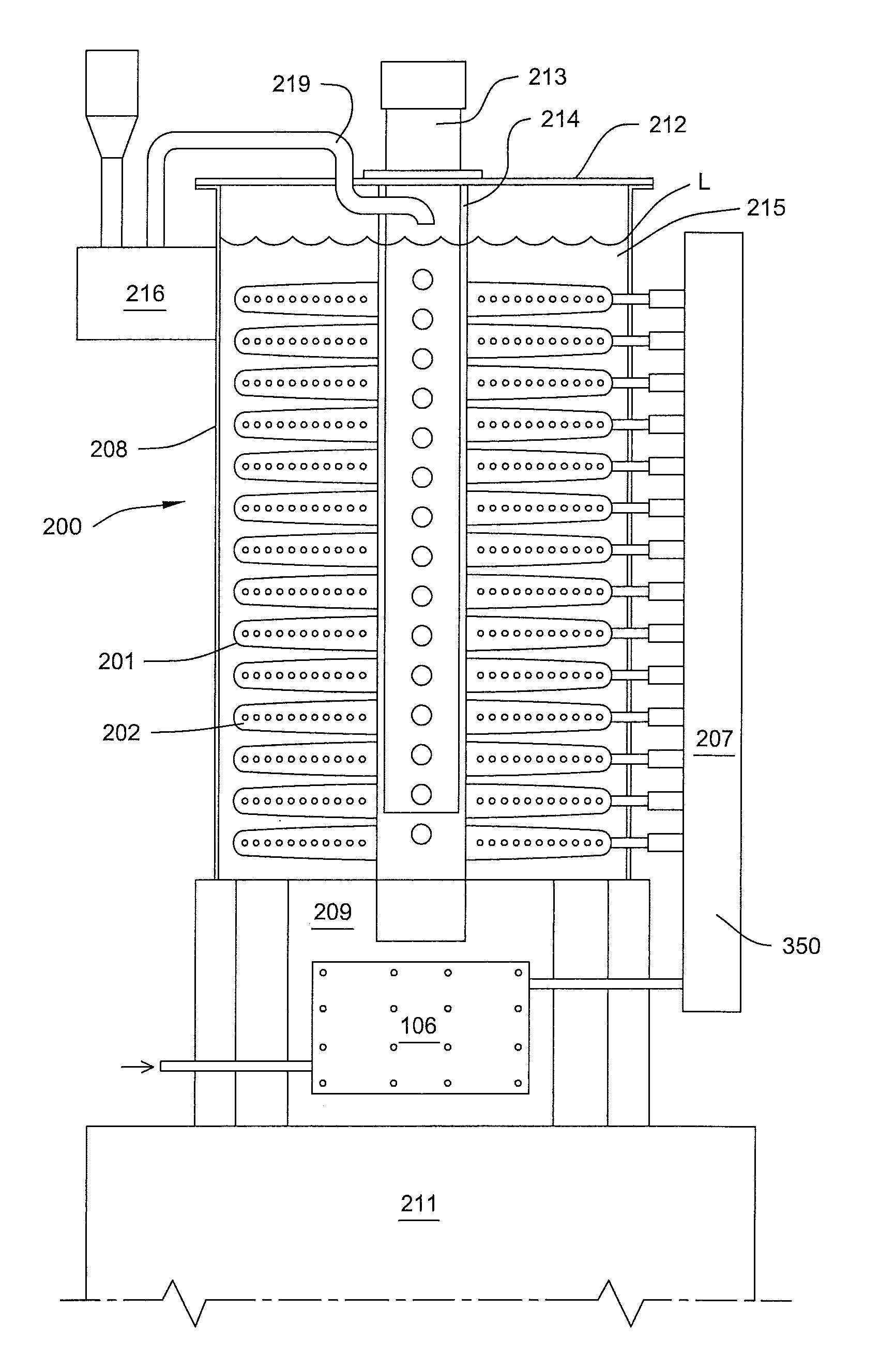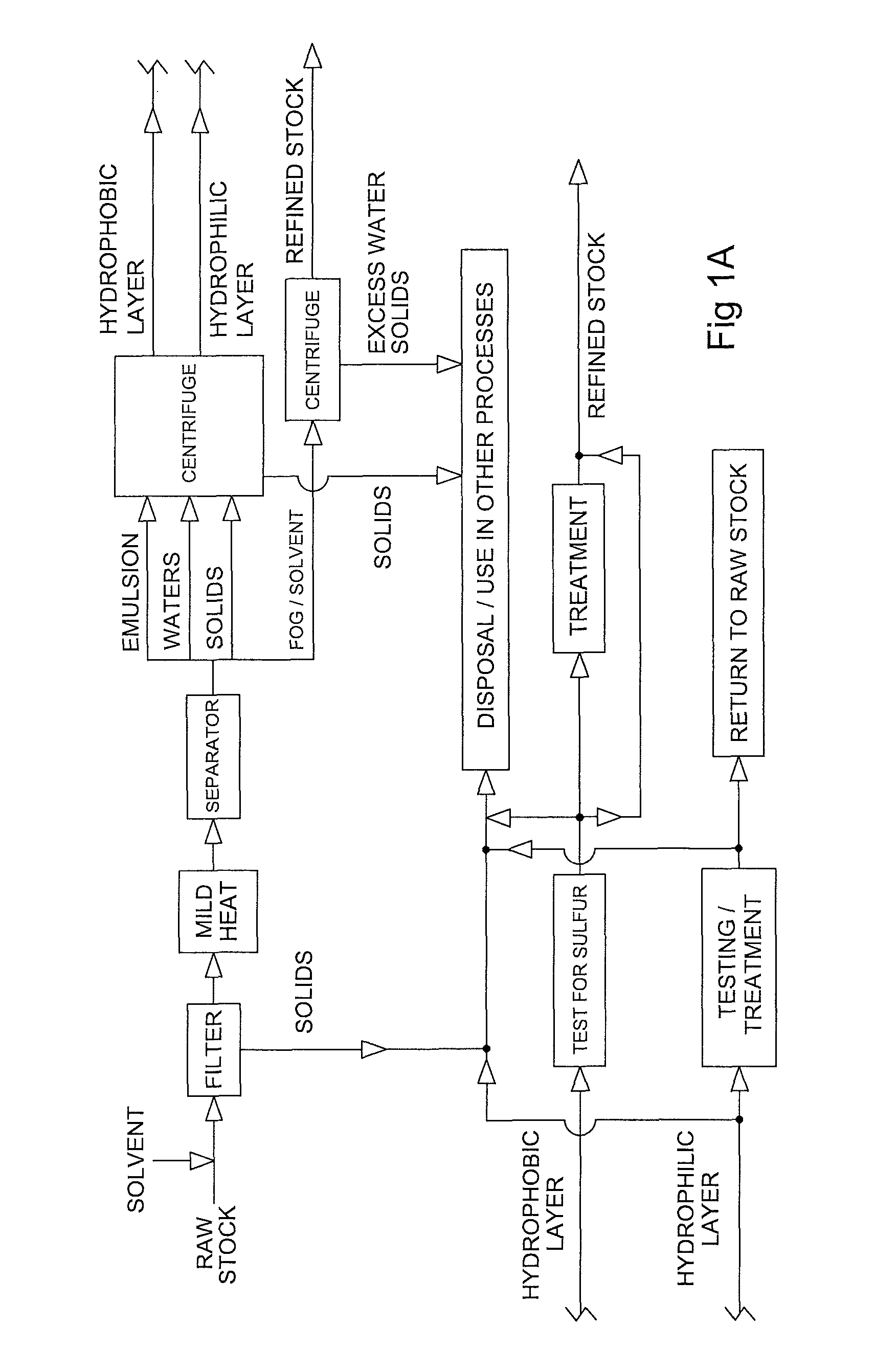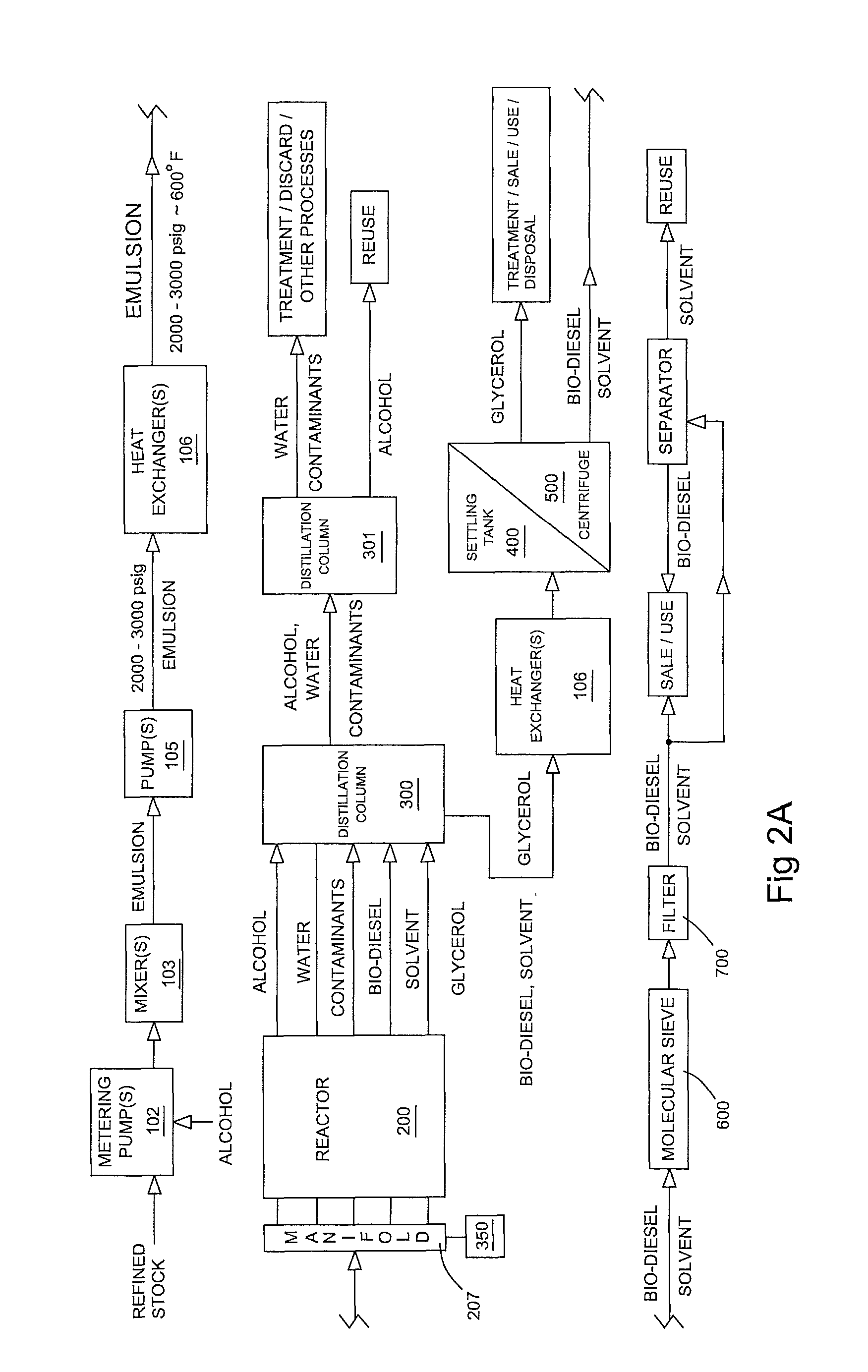Method of manufacturing bio-diesel and reactor
a biodiesel and reactor technology, applied in the direction of indirect heat exchangers, fatty acid chemical modification, lighting and heating apparatus, etc., can solve the problems of high energy consumption, increased costs, unpleasant odors of workers, etc., and achieve the effect of efficient processing a wide variety of feed stocks
- Summary
- Abstract
- Description
- Claims
- Application Information
AI Technical Summary
Benefits of technology
Problems solved by technology
Method used
Image
Examples
example no.1
Example No. 1
[0157]A refined feedstock was treated according to the methods described herein. The feedstock comprised about 50.7 percent by weight triolein (a symmetrical triglyceride typically present in olive oil); about 13.9 percent by weight solvent in the form of methyl oleate (bio-diesel); about 8.0 percent water by weight; about 0.0073 percent by weight carbon disulfide and 0.0073 sodium sulfate. To this was added, about 27.3 percent by weight methanol to form an emulsion. All percentages are given with respect to the emulsion. The molar ratio of the methanol to triglycerides in the emulsion was about 15:1.
[0158]The emulsion was pressurized to about 2500 psig and heated to about 600° F. It was then passed through a reactor substantially as described above. Heat transfer media in the reactor was maintained at about 750° F. Pressure in the reaction lines was maintained at about 2500 psig throughout the process.
[0159]The manifold was used to break the reaction lines in the react...
example no.2
Example No. 2
[0161]A refined feedstock was treated according to the methods described herein. The feedstock comprised about 10.3 percent by weight triolein (triglyceride); about 20.8 percent by weight diolein (diglyceride); about 10.8 percent by weight monoolein (monoglyceride); about 21.9 percent by weight solvent in the form of methyl oleate (bio-diesel); about 13.2 percent water by weight; about 0.011 percent by weight carbon disulfide and about 0.011 sodium sulfate. To this was added, about 23.0 percent by weight methanol to form an emulsion. All percentages are given with respect to the emulsion. The molar ratio of the methanol to glycerides in the emulsion was about 10:1.
[0162]The emulsion was pressurized to about 2500 psig and heated to about 600° F. It was then passed through a reactor substantially as described above. Heat transfer media in the reactor was maintained at about 750° F. Pressure in the reaction lines was maintained at about 2500 psig throughout the process.
[01...
example no.3
Example No. 3
[0165]A refined feedstock was treated according to the methods described herein. The feedstock comprised about 6.2 percent by weight triolein (triglyceride); about 14.7 percent by weight diolein (diglyceride); about 21.6 percent by weight monoolein (monoglyceride); about 22 percent by weight solvent in the form of methyl oleate (bio-diesel); about 13.2 percent water by weight; about 0.011 percent by weight carbon disulfide and about 0.011 sodium sulfate. To this was added, about 22.2 percent by weight methanol to form an emulsion. All percentages are given with respect to the emulsion. The molar ratio of the methanol to glycerides in the emulsion was about 8:1.
[0166]The emulsion was pressurized to about 2500 psig and heated to about 600° F. It was then passed through a reactor substantially as described above. Heat transfer media in the reactor was maintained at about 750° F. Pressure in the reaction lines was maintained at about 2500 psig throughout the process.
[0167]T...
PUM
| Property | Measurement | Unit |
|---|---|---|
| temperatures | aaaaa | aaaaa |
| molar ratio | aaaaa | aaaaa |
| density | aaaaa | aaaaa |
Abstract
Description
Claims
Application Information
 Login to View More
Login to View More - R&D
- Intellectual Property
- Life Sciences
- Materials
- Tech Scout
- Unparalleled Data Quality
- Higher Quality Content
- 60% Fewer Hallucinations
Browse by: Latest US Patents, China's latest patents, Technical Efficacy Thesaurus, Application Domain, Technology Topic, Popular Technical Reports.
© 2025 PatSnap. All rights reserved.Legal|Privacy policy|Modern Slavery Act Transparency Statement|Sitemap|About US| Contact US: help@patsnap.com



